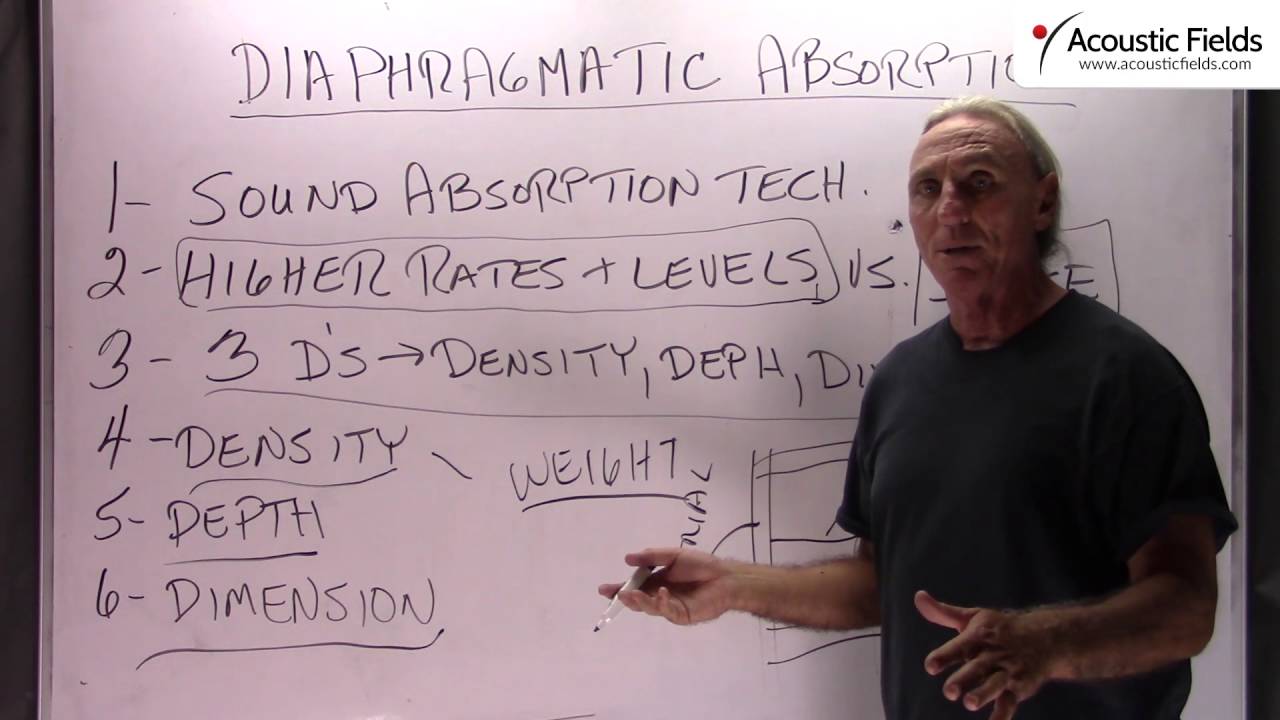Today we’re going to talk about diaphragmatic absorption. What is diaphragmatic absorption? It’s a sound absorption technology. That’s all it is. We have sound diffusion. We have sound absorption. Those are the two we have. There’s all kinds of hybrids between those. And this is in the sound absorption category. This is what we design and develop, it is diaphragmatic absorption. That’s what Acoustic Fields is known for.
Why diaphragmatic absorption? And by the way we all have diaphragmatic absorbers in our walls in our house. Diaphragmatic absorber is a cabinet with the back and a front and a hollow space in the middle. That’s a diaphragmatic absorber, okay?
Why do we like diaphragmatic absorption? Higher rates and levels versus smaller amounts of space. Real estate is expensive, our rooms are smaller, our problems are larger. So we have to figure out ways to absorb a lot of energy in a small amount of space. So that’s why we like diaphragmatic.
What’s the big thing about diaphragmatic? The 3 D’s. Density, depth and dimension. Density: the weight of the materials that we use. Front wall, rear wall, side wall, okay? Space. So what is the density so that we use? The weight of the material that we use in the structure, okay? That’s the density.
The depth: this spot in here that determines the resident frequency or the low point of absorption. Everything above it’s absorbed, everything below it is not. Okay?
Dimension: you’ve got to have a certain square footage requirement based on your room size, volume and usage to combat the problem. If you’re in a room that’s 10 x 10 x 9 you’re going to need a lot of surface area covered with low frequency absorption because basically the whole room is an acoustic mess.
So density, depth and dimension. Now, what do we do with ours? We change the front wall, add another wall and then we add our carbon technology to the center. But we’ll talk more about that in another video. Alrighty?
So diaphragmatic absorption, sound absorption technology with high rates and levels. Ours is unique because of the carbon inside of it and you can read all you want about it on the website.







